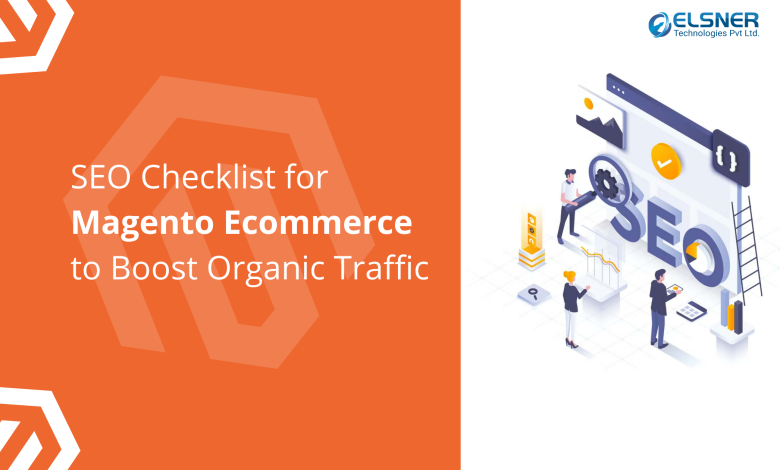
Search engine optimization is a popular choice among online business owners since it is an economical approach to draw customers to their websites. However, SEO is more complicated than just writing an advertisement and placing a bid.
Every piece of code on your website needs to be optimized for organic search engine positioning, from your product descriptions to the safety of your website.
Magento eCommerce development services also include combining the best efforts for optimization and producing some outstanding outcomes.
So, before your competitors outperform your firm, it is preferable to make necessary corrections.
SEO checklist for boosting eCommerce site traffic
1. Optimize website speed
Magento 2 does, by default, support a quicker loading time than Magento 1. However, to improve both user experience and search engine optimization, you can still speed up your website even more because site speed is one of the essential elements that affect SEO.
2. Support Google AMP
Google formally unveiled the Accelerated Mobile Pages (AMP) in 2016.
You can now see the AMP sites with the small lightning symbol in the search results, frequently on the first page. The AMP is likely to play a significant role in SEO in the future because it is four times speedier than standard mobile pages.
3. Magento 2 robots.txt file
The search engine bots will read the robot.txt file and use it as guidance on how to index the website in accordance with your preferences. As a result, the Magento robots.txt is crucial to Magento eCommerce Development and to easily optimize for search engines.
4. Magento 2 XML sitemap submission
If the robot file is the guide, then a sitemap is a road map directing crawlers to all of the pages on your website. Google Search Console will receive the XML sitemap from Magento 2. The search engine bots will then access your website through all of the links supplied.
You can use a module like Magento 2 XML Sitemap for a company with a lot of products to improve search engine crawling.
5. Rich snippets
A sort of structured data markup that you may incorporate into the existing HTML of your Magento 2 site is known as a “Rich Snippet.”
This aids search engines in comprehending the website’s content and makes it possible to use unique features when displaying your store on the search result pages. So, you can install the Magento 2 rich snippet extension to enhance these markups.
6. Use canonical tags
You develop a poor reputation with crawlers if you have too many URLs with the same or comparable content.
In order to assist webmasters in directing crawlers to the main URL among pages with related content, you can create a canonical tag.
7. HREFlang for multi-store view
You might have the same content in English on many URLs targeted towards the UK, US, and Australia for the Magento 2 site’s multi-store view. However, Google could not recognize what you’re attempting to accomplish and consider it to be duplicate content.
The Hreflang tag was created to address this problem. You provide all the various URLs on your sites that have the same content using this code. Hence, Magento eCommerce development shows successful SEO results.
8. Breadcrumbs in Magento 2
The breadcrumbs come in two varieties. The navigation path of the product will be shown as breadcrumbs in the search result, improving the presentation. The other is a list of the product’s category and breadcrumbs directly on its page.
Breadcrumbs are a helpful tool to help consumers browse an eCommerce site with a complex structure and many sub-categories.
9. Utilize UGC, Q&A forums, customer ratings, and guest posting
User-generated material adds more information and credibility to the pages, especially regarding products with scant details.
Rich snippets can also be shown using the rating. The Q&A segment enables users to engage more with your website, lengthen their stay, and reduce bounce rates.
In addition, guest posting can improve link building, leading to improved link juice and website authority.
10. Use the Magento search feature
Users are not very patient; they will get irritated if they can’t locate the goods they are looking for online. Therefore, the search feature on the Magento website is crucial.
Most of the time, people prefer to type their search terms into the website and then navigate and locate it. So, make it simpler for clients and prominently promote search.
To wrap things up
Ranking on Google’s first page is not the result of any magic tactics; rather, it results from producing content that benefits users and correctly configuring technological elements.
Search Engine Optimization calls for a number of unique modifications and settings for an eCommerce platform like Magento. Hence, it is required to spend some time and energy getting the Magento SEO setup ready to boost organic traffic and shop revenue.
However, if you do not want to get into the hassle, Reach out and hire a Magento eCommerce Development Company.




